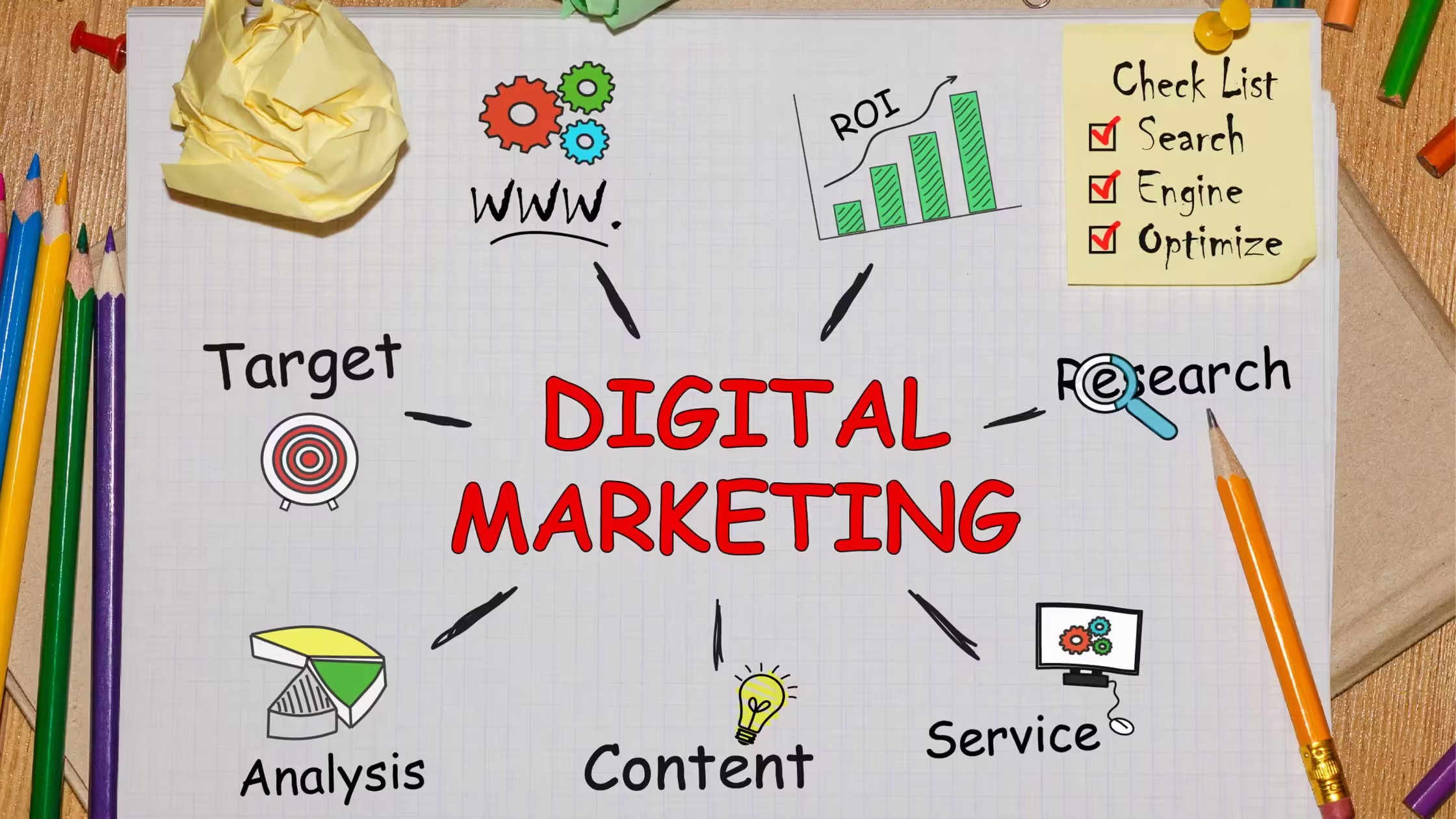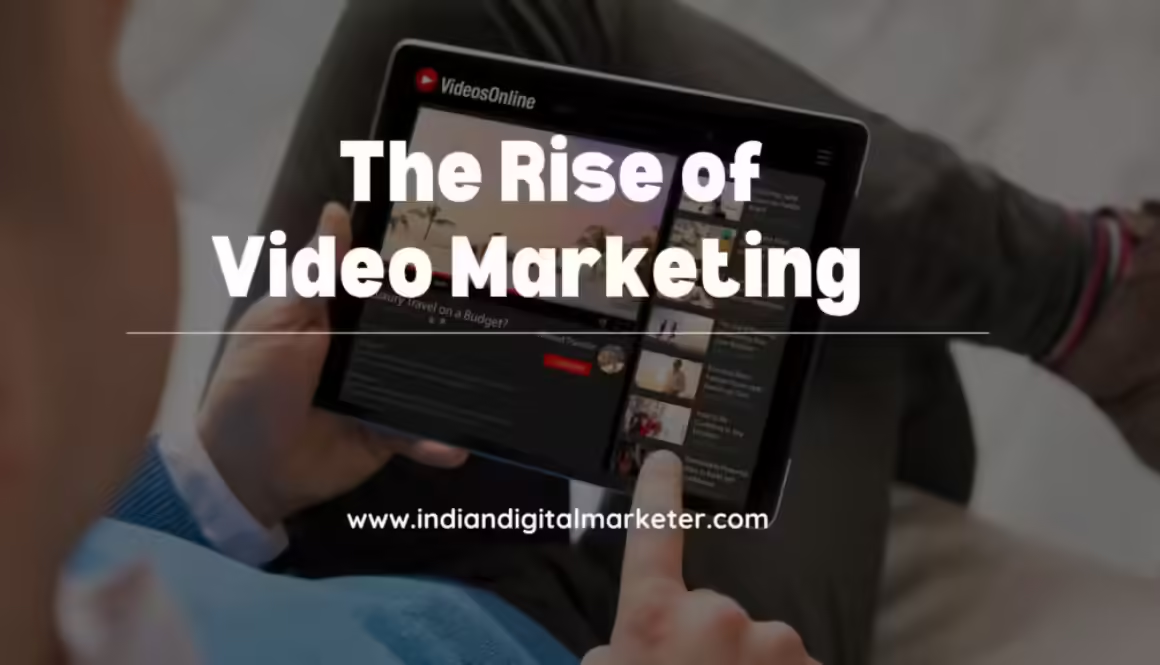The Rise of Video Marketing: How to Get Started
In today’s digital world, video marketing has taken the spotlight, changing the way brands connect with audiences and driving a more personal, engaging experience for consumers. It’s not just a passing trend; it’s reshaping how businesses communicate, turning viewers into loyal customers with well-timed, visually engaging content. But how do you dive into video marketing if you’re new to the game? Here’s everything you need to know about why video marketing is essential, how to get started, and ways to keep it simple and effective.
Why Video Marketing is Booming

Ever noticed how we tend to stop scrolling when a video starts playing? That’s no accident. Video grabs attention in ways that text and images simply can’t. By pairing visuals with sound, storytelling, and motion, videos keep viewers engaged, especially when they are just a few minutes long and offer immediate value. For businesses, that means the chance to connect with viewers emotionally and build a deeper bond.
2. Higher Conversion Rates
Video marketing is not just about getting attention – it’s about converting it into action. Studies show that viewers are 85% more likely to buy a product after watching a demo video, and it makes sense. Seeing a product in action helps viewers understand its value and trust the brand offering it. This added trust translates into higher conversions and more loyal customers.
3. Building Brand Awareness
Videos are a fantastic way to show what a brand stands for and highlight its personality. Whether it’s through product demos, customer testimonials, or behind-the-scenes glimpses, video lets brands showcase their unique identity, making them memorable. This boosts brand awareness and helps audiences feel connected to a brand, which is crucial for standing out in crowded markets.
4. Better SEO
Search engines love video. By embedding videos on websites or posting them on YouTube and social media platforms, brands can boost their search engine rankings. This is because videos keep people on a page longer, signaling to search engines that the content is valuable. The better the SEO, the more likely people are to find your brand organically.
Types of Video Content for Businesses
Not all videos are created equal. Knowing which type works best for your brand’s goals can help you make a greater impact.
- Educational/Informational Videos: These videos answer common questions, solve problems, or share industry insights. They help position your brand as an authority in your field.
- Product Demos & Reviews: Give potential customers an up-close look at your product. Highlight its features, benefits, and how it solves problems. If your product can be shown in action, all the better.
- Behind-the-Scenes Content: Showing the human side of your brand builds trust. Take viewers behind the scenes to meet your team or showcase your production process.
- Live Streaming: Engage directly with your audience in real-time, which is a fantastic way to build rapport and answer questions on the spot.
- User-Generated Content: Encourage customers to create content featuring your products or services. It builds authenticity and helps viewers trust your brand because they see real people enjoying what you offer.
Getting Started: Essential Steps for Video Marketing

Define Your Goals
Every good strategy starts with a clear goal. Ask yourself what you want to achieve: Are you looking to increase brand awareness, boost engagement, or drive sales? Setting specific objectives will help you tailor your video content to meet those needs effectively.
Know Your Audience
Understanding your audience is key to any marketing effort. Look at the types of videos they watch, what platforms they frequent, and the kinds of content that resonate with them. Tailor your videos to their preferences and pain points to maximize impact.
Select the Right Platforms
Not all platforms are created equal, and each one attracts different demographics and interests. YouTube is great for long-form content, Instagram and TikTok for shorter clips, and LinkedIn for professional or educational videos. Choosing the right platform will ensure your videos reach the right audience.
Choose Video Formats
Based on your goals, select formats that make sense for your content strategy. Want to create brand awareness? Consider short clips or viral challenges. Want to educate? Go for longer, informative videos. Experiment with different formats until you find what works best.
Creating Quality Video Content: Tips and Best Practices
Creating video content doesn’t have to be intimidating. Here are some tips to make sure your videos hit the mark.
Plan Your Content
Preparation is key. Outline a storyboard, draft a script, and think through the shots you’ll need before hitting record. This will save time and help you avoid unnecessary edits later.
Focus on Quality
Your video doesn’t have to be a Hollywood production, but basic quality matters. Invest in good lighting, a clear microphone, and proper editing. Small tweaks can make a big difference and leave viewers with a positive impression.
Optimize for Mobile
More than half of video content is consumed on mobile devices, so make sure your videos look good on smaller screens. Vertical videos or square formats work well on mobile, and avoid text that’s too small to read on a phone screen.
Add Captions and Subtitles
Captions make videos more accessible and are a good idea since many people watch videos without sound. Plus, they add a professional touch to your content and help get your message across even without audio.
Include a Call-to-Action (CTA)
Never leave your viewers wondering what to do next. Whether you want them to visit your website, follow your social media, or buy a product, include a clear call-to-action that encourages them to take that step.
Promoting Your Video Content
Creating great content is only part of the video marketing journey; you also need to get it seen.
Leverage Social Media
Share your videos across social channels. Use relevant hashtags, write engaging captions, and time your posts for when your audience is most active.
Optimize for SEO
Using keywords, especially in titles, descriptions, and tags, will help your videos rank better on search engines. Good SEO will also increase your video’s visibility on YouTube and Google, driving more traffic to your brand.
Collaborate with Influencers

Repurpose Content
One video can be broken down into many pieces. Use clips for social media posts, convert content into blog posts, or even make GIFs to share on platforms. Repurposing allows you to maximize each video’s impact without starting from scratch.
Measuring Success: Key Metrics to Track
Once your videos are live, track their performance to understand what’s working and where you can improve.
- Views and Watch Time: These tell you if people are interested in watching your videos.
- Engagement Rate: Likes, shares, and comments indicate how your audience interacts with your content.
- Conversion Rate: If your goal is to drive sales, this metric shows how effective your video is at doing just that.
- Audience Retention: See how long viewers stick around to know if they find your video engaging from start to finish.
Conclusion: Why You Should Start Now
Video marketing offers a unique way to connect, inspire, and grow your audience in ways that traditional marketing doesn’t. By focusing on authentic, quality content and following the tips outlined above, you can start creating videos that resonate with your audience and help you reach your goals. So, don’t hesitate – grab your phone, start small, and experiment. The potential for impact is immense, and there’s no better time to start than now!
